

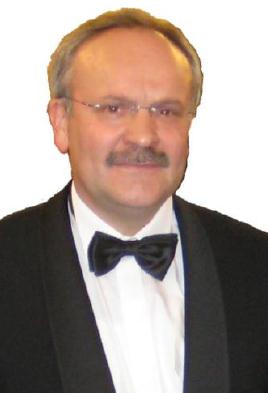 | Prof. Sigitas Tamulevičius Member of the European Materials Research Society Professor of the Physics Department, Kaunas University of Technology (KTU), Republic of Lithuania |
| Keynote Speech Title: Plasma deposition of diamond like carbon based nanocomposites for optical and electrical applications
Abstract: Diamond-like carbon (DLC) films is the subject of considerable attention due to their extraordinary properties such as low friction coefficient and high wear resistance; high corrosion resistance and chemical inertness; high electrical resistivity; infrared-transparency and high refractive index. Therefore, many applications of DLC films have already been implemented for practical use such as mechanical elements, optical components or biomaterials. Metal nanoparticle containing DLC films showing excellent potential in various practical applications attract much attention as well. The nanocomposite films containing the nanometer range sized noble metal nanoparticles of silver, gold or other metals like copper, embedded in a matrix such as amorphous carbon have been studied intensively, since such type of films exhibit surface plasmon resonance (SPR) and are promising materials for developing the elemental base of laser physics, opto- and micro-electronics devices. The unique optical properties of such nanostructured films in the visible region of the spectrum, are due to resonance bands of plasmon-polariton absorption and their characteristics depend on the filer and host material, on the size and shape of nanocrystallites and their concentration, and also on the morphology of the composite material. More... | |
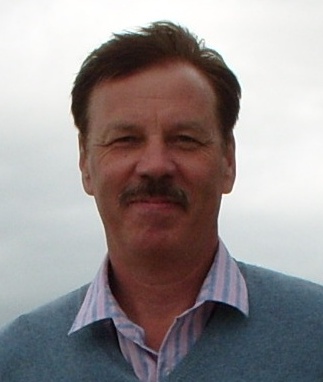 | Dr. Alexander Khotsianovsky Pisarenko Institute of Problems of Strength of the National Academy of Sciences of Ukraine, Ukraine |
| Keynote Speech Title: Fretting fatigue life prediction for state-of-the-art materials and structures
Abstract: Life of structural elements subject to fretting fatigue, tribofatigue and contact fatigue is predicted with innovative techniques developed by the author, colleagues from the Tribofatica Scientific Association (Belarus), and researchers of Western schools of fretting fatigue (Germany and Spain). Fretting fatigue occurs at relative displacement (slip) of a cyclically loaded structural component and a clamped counterbody. Normal and shear surface stresses in slip give rise to early nucleation and quick propagation of short cracks with the stress intensity factors (SIF), being inversely proportional to the crack length, while SIF of normal is directly proportional to it. Fracture mechanics approach is widely used for prediction of fretting fatigue propagation phase, corresponding to the larger share of the structural component total life. More... | |
 | Prof. Fu-sui Liu Department of Physics, Peking University, China |
| Keynote Speech Title: New Times of Material Science and Engineering
--Advantages of CMR Manganites over Semiconductors and Superconductors
Abstract: Based on 12 similarities between high-Tc cuprates and CMR. (colossal magnetoresistance) manganites in aspects of lattice and electronic structures, and on quantitative explanations for 15 experimental facts on pseudogap and CMR, this paper concludes that both the pseudogap and CMR in CMR manganites are caused completely by Cooper pairs. This paper gives the properties of Cooper pairs, and some examples of applications. These applications indicate that in future 20~30 years more than 90% and 80% applications of superconductors and semiconductors might be replaced by CMR manganites, respectively. | |
 | Emeritus Professor Robert Cottis Corrosion and Protection Centre, School of Materials, University of Manchester, UK |
| Keynote Speech Title: The Corrosion Passport – What Engineers Need to Know About Corrosion
Abstract: Corrosion in a very expensive phenomenon; global costs of corrosion are currently estimated to be in the region of 1.8 trillion US dollars. Surveys that have looked at the costs of corrosion have estimated that in the region of 25% could be saved by the application of existing technology. Many of the avoidable costs arise because practising engineers are insufficiently aware of corrosion and its control, and the Corrosion Passport is a proposal by the World Corrosion Organization (WCO) that is intended to provide guidance to engineering professional bodies and educational establishments for the minimum that engineers should know about corrosion. This paper will examine examples of corrosion failures to illustrate the need for such education, and present the specification for the Corrosion Passport. | |
 | Prof. Ian Baker Sherman Fairchild Professor of Engineering, Senior Associate Dean for Academic Affairs, Thayer School of Engineering, Dartmouth College, USA |
| Keynote Speech Title: Microstructures and Mechanical Properties of FeNiMnAl Alloys
Abstract: Near-equiatomic FeNiMnAl alloys show a wide range of microstructures and mechanical properties, but have been little explored. Studies on three different types of microstructures in this alloy system will be outlined: 1) ultrafine microstructures (5-50 nm), present in Fe30Ni20Mn20Al30, Fe25Ni25Mn20Al30 and Fe35Ni15Mn25Al25, which consist of (Fe, Mn)-rich B2-ordered (ordered b.c.c.) and (Ni, Al)-rich L21-ordered (Heusler) phases, and in Fe30Ni20Mn25Al25, which consist of (Ni, Al)-rich B2 and (Fe, Mn)-rich b.c.c. phases, with the phases aligned along <100>; 2) fine microstructures (50-70 nm), present in Fe30Ni20Mn30Al20, Fe25Ni25Mn30Al20, and Fe28Ni18Mn33Al21, which consist of alternating (Fe, Mn)-rich f.c.c and (Ni, Al)-rich B2-ordered plates with an orientation relationship close to f.c.c.(002)//B2(002); f.c.c.(011)//B2(001); and 3) coarser (0.5-1.5 µm) lamellar microstructures observed in alloys with a lower aluminum content, such as Fe30Ni20Mn35Al15, that consist of alternating (Fe, Mn)-rich f.c.c and (Ni, Al)-rich B2-ordered phases with a Kurdjumov-Sachs orientation relationship between the phases. The microstructures and mechanical properties in these alloys have been determined as a function of annealing time, testing temperature and strain rate. Some unusual features that have been observed include: no change of hardness as the phase width increases in some of the B2/L12 alloys; a lower BDTT for coarser phase-sized Fe30Ni20Mn20Al30 than material with a finer phase size; a monotonic increase in elongation with increasing phase spacing in Fe28Ni18Mn33Al21; room temperature environmental embrittlement at slow strain rates in Fe30Ni20Mn35Al15, and a monotonic improvement in this embrittlement with increasing concentrations of Cr. | |
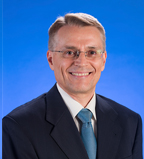 | Prof. Spas D. Kolev School of Chemistry, The University of Melbourne, Australia |
| Keynote Speech Title: Polymer Inclusion Membranes – Advanced Materials for Extractive Separation and Novel Templates for Metal Nanoparticle Synthesis
Abstract: Polymer Inclusion Membranes (PIMs) are a relatively new type of self-supporting liquid membranes as far their extraction and separation capabilities are concerned. They exhibit properties that make them superior to other types of liquid membranes (i.e. bulk, emulsion and supported liquid membranes) and offer an attractive alternative to conventional solvent extraction by mimicking this important industrial separation process but without the use of a large inventory of volatile, flammable and often toxic diluents. In addition, they provide possibilities for conducting the extraction and back-extraction processes simultaneously at opposite sides of the membrane. This arrangement offers the potential for substantial improvements in the overall speed of the separation process and in the reduction of its complexity. PIMs have been also successfully used as templates for the manufacturing of surface layers of noble metal nanoparticles. The potential of PIMs for efficient extractive separation and manufacturing of surface layers of metal nanoparticles will be illustrated in the present talk with examples from our research involving the separation of selected noble and base metal ions from their aqueous solutions and the manufacturing of immobilized onto the surface of PIMs gold, silver or palladium nanoparticles. | |
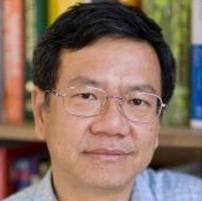 | Dr. Sammy L.I. Chan School of Materials Science and Engineering, The University of New South Wales, Australia |
| Keynote Speech Title: Energy Storage for Remote Area Power Supply Systems
Abstract: One of the possible solutions to provide electricity to a remote area community is to build a self-sustaining power generation system by harvesting the renewable energy. However, the intermittent nature of renewable energy has become a key issue to be solved in order to guarantee a non-interruptible power supply at all times. This presentation discusses the requirements for such an energy storage system to be used in remote area power supply (RAPS), and highlights batteries and hydrogen-fuel cells system as the most promising and flexible options. The benefits and limitations of present and potential battery systems will be explored. Another solution is to generate hydrogen in an electrolyser using excess photovoltaic input in the RAPS, and to store it as metal hydride for later use when insufficient direct solar electricity is available. For numerous reasons, particularly the absence of self-discharge, reliability, longevity and safety in transport and operation, we advocate serious consideration of RAPS using this metal-hydride storage of hydrogen. Technical issues surrounding the use of hydrogen storage, as well as the choices of metal storage alloys, will also be included in the presentation. | |
 | Dr. Wonyong Choi Dept. of Chemical Engineering, School of Environmental Science and Engineering, Pohang University of Science and Technology (POSTECH), Republic of Korea |
| Keynote Speech Title: Metal Oxide Semiconductors with Interfacial Heterojunctions for Solar Photocatalytic and Photosynthetic Applications
Abstract: The photoinduced electron transfers occurring at the semiconductor surface are the key process of solar photosynthetic and photocatalytic processes. Metal oxides such as TiO2, WO3, and Fe2O3 that consists of earth-abundant elements are the most practical base materials for such applications. Despite their popularity as solar conversion materials, breakthroughs in materials development have yet to be achieved for practical applications. A variety of approaches have been investigated to modify the base metal oxides using diverse inorganic and organic materials. The heterojunctions built at the interface of metal oxide reduce the charge recombination or enhance the interfacial charge transfer to achieve the higher conversion efficiency. In this talk, various modifications of metal oxides with interfacial heterojunctions will be introduced and discussed for photocatalytic and photosynthetic applications. The specific examples include thin alumina layer coated WO3 for water oxidation, thin TaOxNy layer coated N-TiO2 nanotubes for water splitting, TiO2/graphene composites for photocatalysis, and charge transfer complexation on the surface of TiO2. Each modification method has a different effect on the solar conversion activity and the mechanisms, which will be discussed in detail. | |
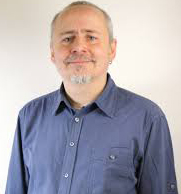 | Dr. Willi Pabst Department of Glass and Ceramics, Institute of Chemical Technology, Prague (ICT Prague), Czech Republic |
| Keynote Speech Title: Effective properties of isotropic porous ceramics
– from rigorous bounds to cross-property relations
Abstract: Theoretical concepts and models are reviewed and applied for the prediction of effective properties of isotropic porous ceramics, with special focus on Young’s modulus (tensile modulus) and thermal conductivity. Based on experimental data for many types of ceramics, it is shown that our exponential relation provides the most realistic property prediction for ceramics with isometric pores and convex porosity below 60–70 %, while concave porosity typically leads to lower effective properties and highly porous cellular ceramics with porosities above 60–70 % (ceramic foams, typically with saddle-point porosity) tend to have higher effective properties, which are usually well described by power-law relations. Further, it is shown that our cross-property relation is more universal than any model relation and provides extremely precise relative property predictions. A new generalized version of this relation is proposed that can be used even in the case of extremely anisometric pore shape, e.g. oblate spheroids. | |
| Dr. Manoj Gupta Department of Mechanical Engineering, National University of Singapore, Singapore | |
| Keynote Speech Title: Magnesium Based Nanocomposites: Light Weight Materials of the Future Abstract: Magnesium (with density, ρ = 1.74 g/cc) being ~ 35% lighter than aluminum and ~ 70% lighter than steel is an attractive and a viable candidate for the fabrication of lightweight structures. Progressive research advancements have been made so far to utilize the magnesium (Mg) based materials in various technology-driven applications. Recently, the incorporation of inexpensive nanoscale ceramic particles to Mg has received astounding attention, as it promises a new class of Mg materials called Mg-metal matrix nanocomposites (Mg-MMNCs) which displays superior strength and/or ductility, corrosion resistance, high temperature properties and wear resistance without noticeable weight gains. In this talk, an overview of the processing and properties of various Mg-MMNCs will be presented. First, the innovative and cost effective processing methodologies such as disintegrated melt deposition method and microwave assisted bidirectional rapid sintering technique will be briefly introduced. Later, the mechanical and corrosion characteristics of various Mg-nanocomposite formulations produced using the above mentioned methods will be presented. Finally, an account of on-going research initiatives in the development of novel light weight Mg nanocomposites will be highlighted. | |
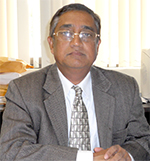 | Prof. Hassan Mahfuz Director of Nanocomposites Laboratory, Florida Atlantic University, USA |
| Keynote Speech Title: High Energy Fibers through Nanoparticle Reinforcement
In Textile Polymers
Abstract: Polymer fibers such as Nylon, Polyester, Polyethylene, Kevlar, and Spectra have wide range of industrial applications. From light weight armor to automotive bumpers, tires, air bags, to drug delivery, tissue engineering, and wound dressing, polymeric fibers have ever increasing demands. In most of these applications, the elastic energy storage capacity of these fibers would be an important property. A key parameter to quantify this energy is the normalized velocity of the fiber which depends on the strength, fracture strain, density and modulus of the fiber. Normalized velocity is essentially the cubic root of the product of toughness and tensile wave speed of the fiber. Normalized velocities for commercial fibers such as Nylon-6, Spectra, Kevlar, and Dyneema lie between 500 and 800 m/sec. To revolutionize energy absorption and subsequent dissipation, normalized velocity must be doubled, tripled, or even quadrupled. Nanoparticle reinforcement and polymer hybridization offer a unique opportunity to accomplish such goals. More... | |
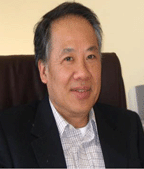 | Dr. Iam Choon Khoo William E. Leonhard Professor of Electrical Engineering, The Pennsylvania State University, USA |
| Keynote Speech Title: Nematic and Blue Phase Liquid Crystals for Optical-Terahertz-Microwave Advanced Applications
Abstract: A critical review of the nonlinear optical responses of nematic as well as Blue-Phase liquid crystals for all-optical switching with femtoseconds – microseconds response speed is presented. In particular, the magnitude and response times of optical Kerr effects associated with director axis reorientation, thermal and order parameter changes, coupled flow-reorientation effects and individual molecular electronic responses are thoroughly investigated and documented, along with exemplary experimental demonstrations. These liquid crystalline materials have been incorporated in a multitude of novel structures to enable dynamical all-optical control of light transmission, spectral reflection, polarization states, beam shape propagation direction and other characteristic. We will discuss the merits and limitation of using nematics, and new possibilities with Blue-phase liquid crystals, and how some of the mechanisms may find applications outside the optical regime such as Terahertz and microwave. [Ref. I. C. Khoo, “Nonlinear Optics of Liquid Crystalline Materials,” Physics Report 471, pp:221-267 (2009); I. C. Khoo, “Nonlinear Optics, Active Plasmonic and Tunable Metamaterials with Liquid Crystals,” Progress in Quantum Electronics, Volume 38, Issue 2, pp: 77–117 (2014); I. C. Khoo and S. Zhao, “Multiple Time Scales Optical Nonlinearities of Liquid Crystals for Optical-Terahertz-Microwave Applications,” Progress in Electromagnetic Research PIER, Vol. 147, page 37-56, 2014] | |
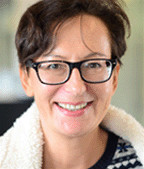 | Dr. Katarzyna Grabowska Materials Technology and Textile Design, Lodz University of Technology, Poland |
| Keynote Speech Title: From Electromagnetic Field Suppressing To Energy Harvesting
Abstract: The most common current method of suppressing the harmful electromagnetic field using movable textile guards is Faraday cage formed of electrically conductive composite fibers. However, the effect of damping of the magnetic and electrical components, as well as parameters describing the comfort of use (energy and moisture permeability) are still insufficient. This paper presents a new, efficient method for suppressing electromagnetic field using the hybrid yarn as a weft in textiles. Different structural compositions of this thread were examined, this means: copper, steel, swisshield yarn, carbon nanotube yarn (CNT yarn) and the effects of attenuation of the electromagnetic field were investigated. Then, based on the optimal solution of the hybrid yarn structure, the researches on electromagnetic induction in an alternating electromagnetic field were conducted too. The aim of these researches is energy storage and energy harvesting using textile transmitter. The inspiration for exploring this research topic is an idea of textile positioned at the hips' level (as part of the trousers) and magnets permanently placed in cufflinks. The movement of hands performed while walking generates a changing electromagnetic field which inducts the current in the hybrid thread inserted as a weft in in a textile placed at the hips level. The hybrid thread is joined with the power supply system of the cell phone and inducted current sustains its power supply. This project is also focusing on artificial sources of changing electric energy like: electrical power installations used for electric energy transfer (power lines) as well as installations and electric devices (industrial, medical, everyday use devices). Nevertheless, the positive results of the researches presented in the project will influence the development of textiles as a scientific discipline and as a result development of the civilisation because renewable energy supplies are one of the most important conditions of balanced social growth. | |
| Dr. Lucas da Silva Associate Professor, Department of Mechanical Engineering, University of Porto, Portugal | |
| Keynote Speech Title: Recent developments in adhesive bonding
Abstract: The most recent developments in adhesive joints carried out at the Faculty of Engineering of the University of Porto are discussed. Four different topics are presented: adhesives modified with cork particles, mixed mode fracture toughness, dual adhesives in aerospace structures, graded joints and durability of adhesive joints. Impact and tensile tests have shown that with the right amount and size of cork particles, it is possible to achieve that goal. A new multi-mode apparatus, inspired in a load jig previously developed by Fernlund and Spelt is proposed. The jig allows for easy alteration of the mode-mixity and permits covering the full range of mixed-mode I+II combinations. A test procedure to simulate experimentally the thermal and mechanical load of aluminium-ceramic joints was developed. The tests confirm that a mixed adhesive joint gives an improved mechanical behaviour in comparison with a joint with a silicone adhesive alone. The aspect of durability is being studied under different perspectives. One project is dedicated to the use thermally expandable particles to heal or self-heal adhesives. Another project is developing a numerical tool, more specifically a cohesive zone element, that takes into account the water absorption of the adhesive, the testing temperature and the loading condition (static or fatigue). | |
 | Dr. Mitjan Kalin Laboratory for Tribology and Interface Nanotechnology, University of Ljubaljana, Slovenia |
| Keynote Speech Title: IMPORTANCE OF SURAFCES AND INTERFACES FOR FUNCTIONAL TRIBOLOGICAL PROPERTIES OF MATERIALS
Abstract: The surface properties are among the crucial influences for tribological behavior in almost every application. For boundary and mixed lubrication this is quite obvious. However, for full film lubrication, less importance is placed to this point due to predominant relevance of fluid film parameters. However, fluid film formation also depends on solid-liquid interaction, thus also on surfaces and their physical and chemical interactions with lubricants. Wetting and surface energy are often used to describe these phenomena. However, in tribological studies these parameters are very simplified – and more typically – neglected. One of the reasons is that their influence on friction and wear is not yet well understood and that there exists no generally accepted model to encounter these phenomena in engineering design. Moreover, recent studies also show that contact angle does not represent properly the wetting behaviour, but instead, spreading parameter must be used, especially in spreading-wetting regime.More… | |
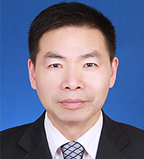 | Dr. Changtai Xia Key Laboratory of Materials for High Power Laser, Shanghai Institute of Optics and Fine Mechanics, Chinese Academy of Sciences, PR China |
| Keynote Speech Title: Recent Developments on Wide Band Gap Semiconductor β-Ga2O3
Abstract: β-Ga2O3 has been discovered as a wide band gap semiconductor as early as 1960s. It has a direct band gap as large as 4.9 eV. However, the growth of single crystals has been hindered, on the one hand, by the twinning affinity and cleavage nature of β-Ga2O3, on the other hand, by the high evaporation tendency and high melting temperature (2000 K) of β-Ga2O3. Recent successful growth of β-Ga2O3 crystal by the floating zone, the Edge-Defined, Film Fed Growth (EFG) and the czochralski methods made careful study of its properties possible. It has been found out that β-Ga2O3 crystal has great application potential in deep-ultraviolet photodetectors and energy-saving light-emitting diodes (LEDs), even greater application potential of β-Ga2O3 in energy-efficient power devices has also been demonstrated. |
|
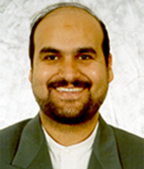 | Dr. Ali Adibi School of Electrical and Computer Engineering, Georgia Institute of Technology, USA |
| Keynote Speech Title: A Novel CMOS-compatible Hybrid Material Platform for Integrated Nanophotonics
Abstract: The development of ultra-compact integrated nanophotonic structures for communications, sensing, and signal processing has been of great interest lately. Recent progress in the development of low-loss waveguides and miniaturized high-Q microresonators for operation at visible and infrared wavelengths have resulted in orders of magnitude reduction in the size of functional integrated photonic structures. The possibility of low-power and fast tuning of the resonance features in these structures has made the formation of reconfigurable photonic structures possible. Among existing CMOS-compatible substrates, silicon (Si) and silicon nitride (SiN) have been used the most. Despite impressing progress in Si-based and SiN-based integrated photonics, neither substrate alone can be used for practical applications. Si (despite its good reconfigurability) suffers from strong nonlinear effects More… | |


